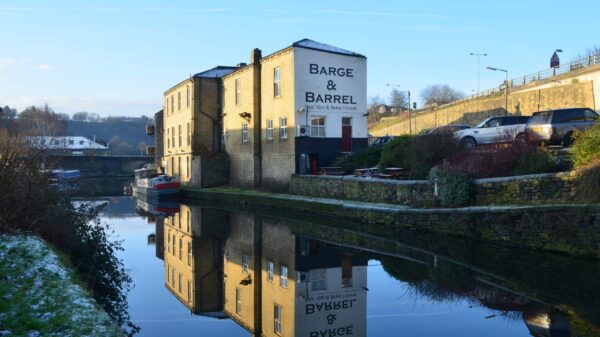From Castleford to Wakefield
Including Fairies Hill to Altofts line and branch to former Wakefield terminus, as well as formerly navigable sections of River Calder from Woodnock Lock to Broadreach Flood Lock.
The Wakefield Branch of the Aire & Calder runs from Fall Ing Lock in Wakefield – where it joins the Calder & Hebble Navigation– to join the main line of the Aire & Calder Navigation at Castleford Junction. The now derelict Barnsley Canal joins the Wakefield Branch just downstream of Fall Ing Lock.
Stanley Ferry on the Wakefield Branch is an interesting spot as it is a rare example of a river navigation crossing its own river by aqueduct. Since 1981, it would be more accurate to say by two aqueducts. The original cast iron aqueduct, with its trough suspended from metal arches alongside (very similar in design to Sydney Harbour Bridge), was suffering structurally. The new aqueduct was built to carry heavy freight barges whilst the original structure was renovated for use by leisure boats.
[The photo shows a loaded barge crossing the original aqueduct at Stanley Ferry in 1980 – by John Gagg]


